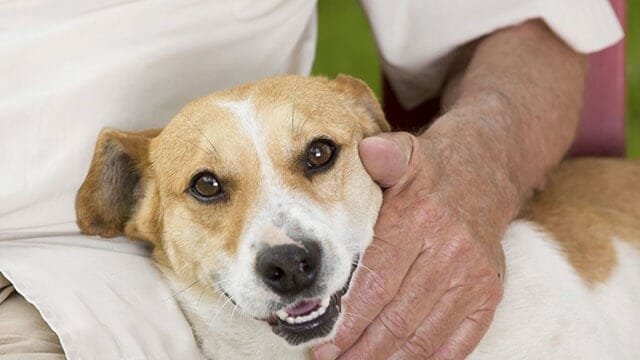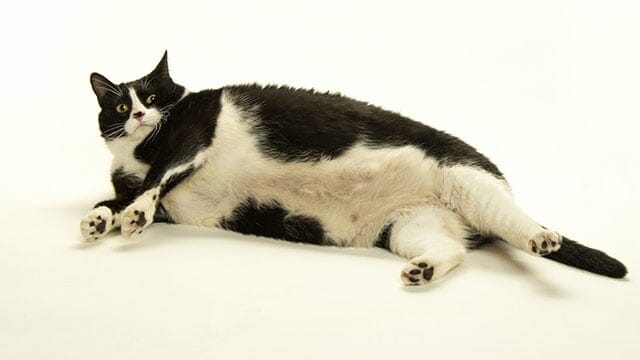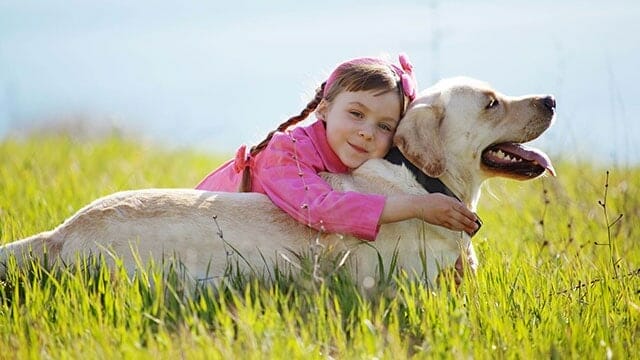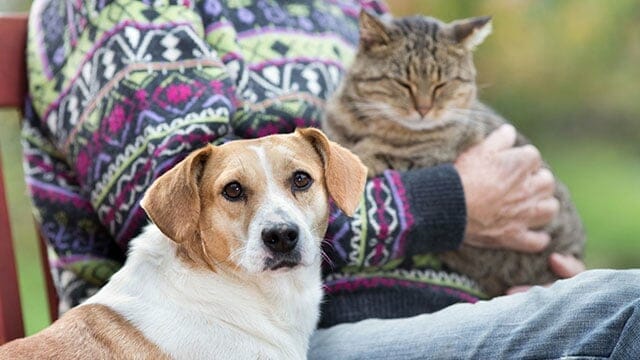We all want our pets to live long, happy lives.
We don’t want to think about life without them.
Fortunately, our pets are living longer, and we need to be aware of the special needs of these precious pets.
There are several reasons pets are living longer and one of them is people treat their pets differently than they did 30-40 years ago.
Pet families are more willing to commit time, energy and money to proper nutrition, exercise, preventative health care in the form of yearly physical exams, routine blood screening, and x-rays.
Another reason is veterinary care has more options than ever before in treating serious diseases, chronic illnesses and degenerative changes that occur in the senior pet population.

When is your pet considered a senior?
It really depends on who you talk to – there are lots of variations on the idea around what constitutes a senior pet.
Large breeds do not live as long as small breeds, so a 6-year-old Great Dane is considered a senior, but a 6-year-old Chihuahua is still a youngster!
Cats tend to live longer than dogs so they are not considered seniors until 11 – 12 years of age.
As a veterinarian, I look at several factors before I decide my patient has entered the “golden years”.
I review age, breed, previous health history, nutrition and a really big one is body weight.
There are studies that have proven an overweight dog will live 2 years less than a dog of a similar breed that is of optimal body weight.
Now you know why I harp on your pet’s weight all the time!
If your lab is overweight and 7 years old – then he is a senior, but if your lab is of optimal body weight and 7 years old – then he is middle age – a big difference when considering the relatively short lifespan of our pets compared to humans.
If your favorite feline is fat – then the risk of diabetes is high, and a shortened lifespan is a possibility.

What conditions do I look for in senior pets?
In some cases it is species specific, for example, I am always on the lookout for chronic kidney disease and hyperthyroidism in senior cats, but in dogs, I tend to keep a watchful eye out for heart disease, cancer, and arthritis.
Recently I’ve been reading studies that have discovered cats have a much higher incidence of arthritis than we used to believe, so I have added that to my senior cat conditions list.
I am always on the alert for dental disease in both dogs and cats.
I tell my clients – aging is not a disease, and although I take age into consideration I do not base my recommendations for treatment and care based on the fact that your pet is “getting old”.
I believe that kind of thinking is harmful to your pet and to their family unit.

What are some of the symptoms of declining health in a senior pet?
Well, to make it easy for you – any change in your older pets weight, activity, appetite, water intake, and behavior can indicate aging and/or a disease process.
Be on the lookout for weight loss, decreased activity, increased water intake, increased urination, lack of appetite, coughing either with or without exertion, bad breath, stiffness in the morning, difficulty climbing stairs, lack of attention to family members, confusion, inappropriate urination, etc.
Some of these things can be a normal part of aging, but with today’s treatment options, you can support your older pets to be more comfortable, happier and live longer with prompt medical attention and care.

Regular exams are of the utmost importance in caring for your senior pet.
Often times we can find a problem early in the course of the disease and start treatment.
I recommend yearly blood work, a urinalysis, and x-rays for most of my senior patients.
Think about arthritis – how much stiffness and difficulty in moving does it take for you to realize your pet needs some anti-inflammatories?
Stiffness and reluctance to move indicate pain – our pets will show pain in more subtle ways than we do.
As a veterinarian, I can detect these subtle changes during a physical exam and we can discuss treatment.
Think about it – you see your pet every day – yet a family member comes over and asks you if your pet is moving slowly or limping?
You didn’t notice, or chalked it up to aging and thought it was inevitable.
I am grateful to have many more options to treat senior conditions than I did years ago.
Stem cell therapy, platelet-rich plasma treatments, safe arthritis medications, dental cleaning with x-rays to detect infected teeth that could be missed with just an exam, high-quality pet foods, homemade diets that are properly formatted for the pet and their conditions, chemotherapy, radiation therapy, and the list goes on and on.
I love it!

Another important factor in your senior pets health care is the home environment.
Pet families need to be aware of the special needs of their older pet in both safety and comfort.
Older dogs will slip on floors, stumble on steps, and can have problems getting in and out of dog doors.
Senior cats can have problems climbing over a high walled litter box, jumping up on furniture or counters to eat or get away from irritants (like the young family dog, other younger more aggressive cats or children).
You can help make your senior pets life safer and more comfortable with carpet runners on slick floors, a larger dog door, big comfortable beds that are easy to get in and out of warming pads made for pets, litter boxes with a low side so there is a comfortable way in and out of the box, and safe zones where other pets and people cannot bother the senior pet.
Think about how humans age and what we want to stay comfortable, as pain-free as possible and safe in our homes – and apply to same to your senior pet.
Senior pets are to be treasured.
Giving them the special care and attention they need at this point in their lives reinforces how much you love them and want them around for a really long time!

